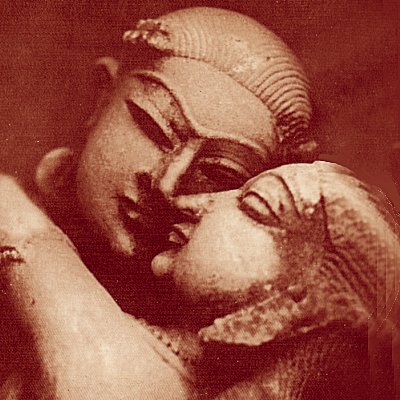
This is the Yoga of love. All devotional practice is Bhakti and consequently there is a alliance, at once natural and problematic, between Bhakti and theistic religion. Through the love she has for her god, the devotee eventually becomes liberated. At the outset, there is a lover and the Beloved. Eventually, through fervent love, the lover merges into the Beloved. Again the subject-object boundary melts away. This is an end of devotion itself since there is now no lover separate from the Beloved: none of the structure on which devotion depends is left. There is love only - the culmination of Bhakti. This can be problematic for those theistic religions which insist that there is an unbridgeable ontological rift between God and his creatures. The profound Bhakta will, if taking her Bhakti to its culmination, therefore become a heretic, and possibly share the fate of Mansoor Halaj. Yet such religions are bound to insist on a duty of devotion.
Bhakti, so defined, is found in mediaeval Christian mysticism, is at the heart of Sufism, and has a place in Vajrayana Buddhism. The latter is Tantric and therefore willing to accommodate all kinds of dispositions in seekers. Devotional types have to be found a place. The religion, is however, strictly speaking agnostic if not atheistic. So what in this context can be the object of devotion? One can in fact be devoted to one of the "deities" such as Tara, though the deities ought to be recognised as emanating from the primordial Mind - in the Jungian terms we have borrowed - from the collective unconscious. The liberational potential here is in the melting into the deity in the penultimate stages of the meditation and then the ultimate dissolving of the whole complex. Again, subject and object lose their distinction, as does the distinction between a subject-object state and a non-dual state. All boundaries disssolve under the power of love which always urges merging.
Vajrayana also uses devotion to one's guru as a living emanation of some aspect of Buddha nature as a Yogic means. This is also found in Sufism and Hinduism.
Bhakti is very clearly mapped out in the Bhagavad Gita wherein it is also brought into relationship with Karma Yoga.
From a Raja Yoga point of view, love itself can be an object on which to make samyama. This may be the love of one's chosen deity, or simply the love in the heart. Then one melts into love and becomes indistinct from it. Quite simply, "Devotion fees". (Paul Reps Centering)
From a (left hand) Tantric point of view, erotic love can liberate. For Sufis too, erotic love is the mirror of Divine Love.